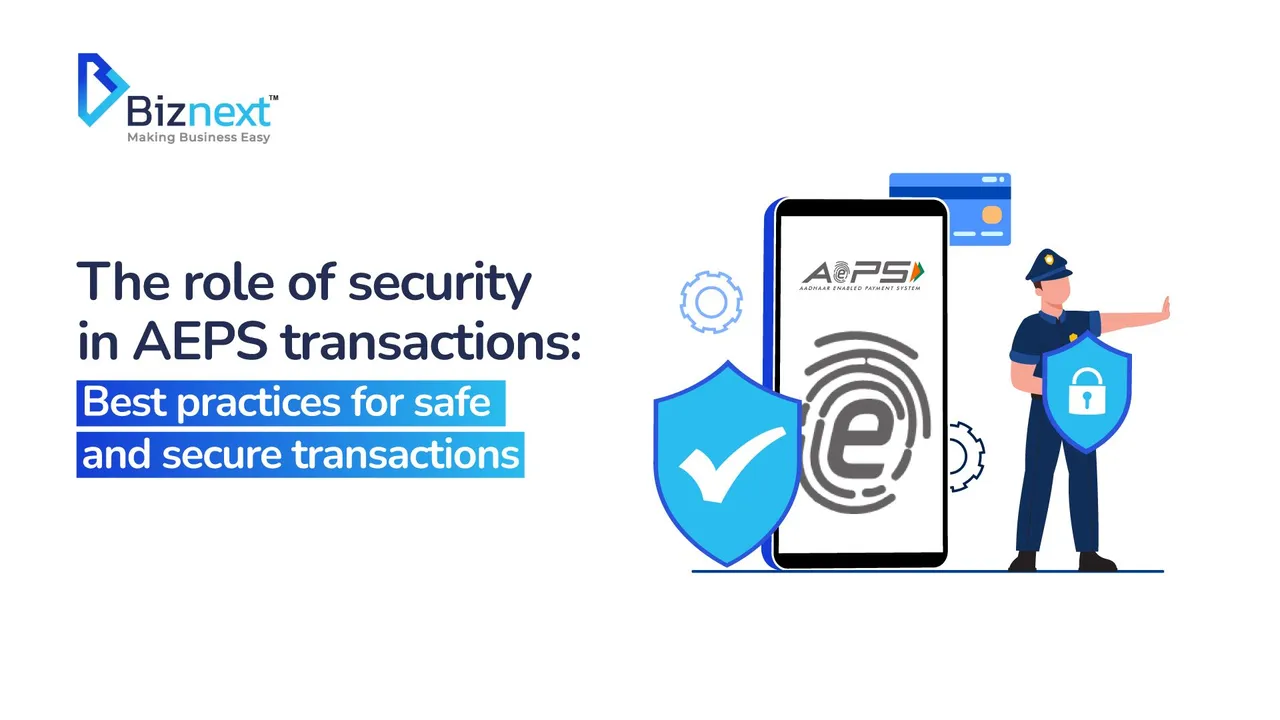What is an AePS Transaction?
The Aadhaar Enabled Payment System (AEPS) is a digital payment system by the NPCI. It allows customers to make transactions using their Aadhaar number and biometric authentication. The Digital India initiative includes it. The initiative aims to promote financial inclusion and cashless transactions in the country.
To use this service, customers will have to link their Aadhar card with their bank account. Once they have linked their Aadhar card, they can also have their account balance there. You can perform AEPS transactions even without a debit card or a mobile phone.
The National Payments Corporation of India (NPCI) operates the AEPS. It is available to customers of all banks. It has gained popularity in rural areas. These areas have limited access to traditional banking services.
Is AePS Transaction Safe and Secure?
Security is a top priority when building the AEPS system. This process ensures that all sensitive information remains encrypted during transmission and storage. It includes customer details and financial information. This makes it impossible for unauthorized parties to access or tamper with this data.
Security Features of AePS Transactions also incorporate biometric authentication. This adds an extra layer of security. Biometric authentication uses a customer’s fingerprint to verify their identity. This ensures that only the authorized person can perform transactions. It prevents fraud and unauthorized access.

Besides, the AEPS system follows strict guidelines set by the Reserve Bank of India (RBI). This ensures the safety and security of transactions. The RBI sets guidelines for banks and financial institutions. They must follow these guidelines when implementing digital payment systems. For example, the AEPS. These guidelines ensure that the system meets certain security standards. They also ensure the system follows best practices. This prevents fraud, hacking, and other security breaches.
The AEPS system incorporates many designed security layers. This ensures safe and secure transactions. The system aims to provide a secure digital payment option for customers in India. It uses advanced encryption technologies, biometric authentication, and strict guidelines.
How do I protect from AePS Unauthorised transactions?

To stop unauthorized transactions in the Aadhaar Enabled Payment System (AePS), adopting measures and adhering to best practices are crucial.
It is imperative to keep your Aadhaar details confidential and not share them. Use AePS services. Make sure to conduct transactions only through reputable and secure channels. track your AePS transaction history. Report any suspicious activity to your bank or the concerned authorities. Install strong authentication measures, such as secure PINs or biometric authentication. Avoid using guessable passwords.
Stay informed about the latest security updates and guidelines. Your bank or financial institution provides them. Besides, enable transaction alerts and notifications. Get instant updates on any activity related to your AePS account. Stay vigilant and take these steps. Doing so will reduce the risk of unauthorized transactions. This will enhance the security of your AePS transactions

Can someone withdraw money in AEPS using my Aadhar OTP?
Aadhaar Enabled Payment System (AePS) transactions typically involve biometric authentication rather than OTP (One-Time Password) verification. In AePS, individuals use their Aadhaar number and fingerprint or iris scan for authentication. OTP is commonly used in other forms of transactions, but not specifically within the AePS framework.
However, it’s crucial to understand that sharing any sensitive information related to your Aadhaar, including OTPs or biometric data, can pose a security risk. If someone gains unauthorized access to your Aadhaar number, biometric details, or OTP, they may attempt fraudulent activities.
To protect yourself from potential unauthorized transactions:
- Keep Aadhaar details confidential: Avoid sharing your Aadhaar number, OTPs, or biometric information with anyone unnecessarily.
- Use secure channels: Conduct AePS transactions only through secure and reputable channels, such as those provided by authorized banks or financial institutions.
- Monitor transactions: Regularly review your AePS transaction history to identify any unauthorized or suspicious activities. If you notice anything unusual, report it to your bank or the concerned authorities immediately.
- Enable alerts: Turn on transaction alerts and notifications provided by your bank to receive instant updates on any activities related to your AePS account.
By practicing these security measures, you can help minimize the risk of unauthorized transactions and enhance the overall security of your Aadhaar-related transactions
Also, read – Top Benefits of Using AEPS for Financial Transactions
Conclusion
In summary, the Aadhaar Enabled Payment System (AEPS) is a digital payment method that makes it easy and secure for people in India to do transactions and access banking services using their Aadhaar number and fingerprints. It’s a crucial part of the Digital India initiative, making financial services more convenient.

AEPS follows strict rules set by the Reserve Bank of India (RBI) to keep transactions safe and prevent fraud. This ensures that users can trust the system for their financial needs. The convenience of AEPS goes beyond just transactions; it allows users to check their balance, withdraw cash, and transfer funds, reducing the hassle of traditional banking.
To keep things safe, AEPS places a big emphasis on protecting your personal information like Aadhaar details and fingerprints. Users should play their part too by keeping these details private, not sharing biometric information casually, and keeping an eye on their transaction history for anything unusual.
In a nutshell, AEPS is not just a way to make payments; it’s a secure and reliable tool that contributes to the broader goals of financial inclusion in India, making formal financial services accessible to everyone and taking us closer to a more digitally advanced future.







यह ब्लॉग पोस्ट Aadhar enabled payment system की सभी अवधारणाओं को स्पष्ट करता है और इससे AEPS सुरक्षा के ज्ञान की गहराई को समझा जा सकता है।